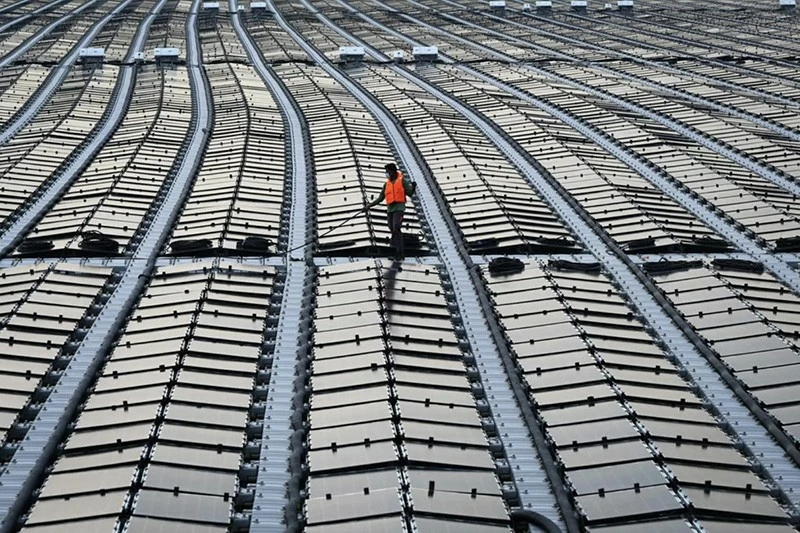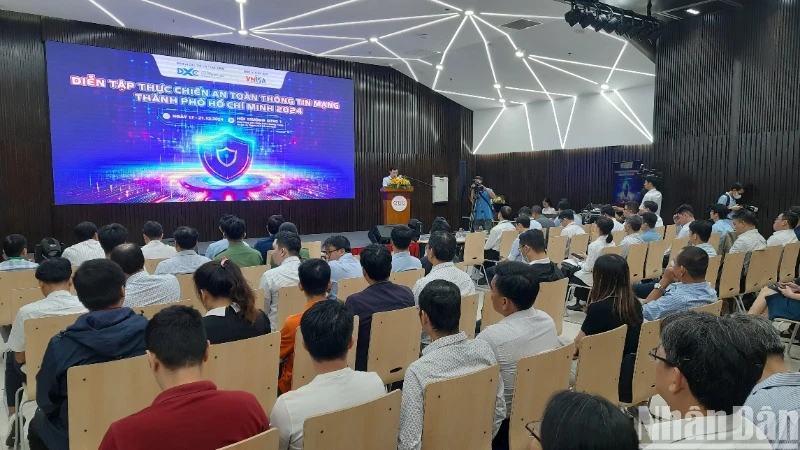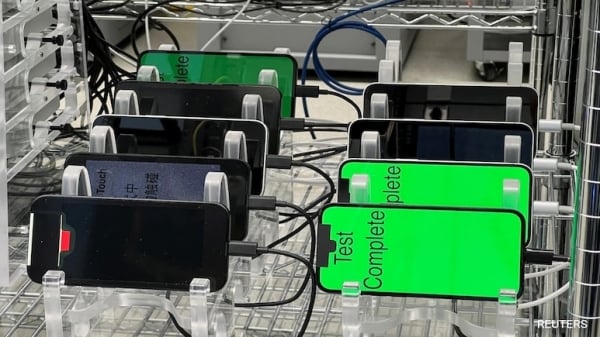According to Professor Syed Munir Khasru - Chairman of IPAG Asia - Pacific (Australia), in the context of increasing demand for artificial intelligence (AI) and cybersecurity, competitive costs, renewable energy sources and political neutrality are factors that make Southeast Asia attractive.
Driven by sectors ranging from finance to healthcare to manufacturing, demand for artificial intelligence infrastructure is growing rapidly worldwide. Global AI spending is expected to reach $632 billion by 2028, according to Professor Syed Munir Khasru. This surge is particularly evident in Southeast Asia, where governments and the private sector are adopting AI and cybersecurity to protect digital assets, improve automation, and foster economic resilience.
Cybersecurity is becoming a major focus in the region. The global cost of fighting cybercrime is estimated to reach $10.5 trillion next year, creating an urgent need for enhanced security frameworks.
Southeast Asia is becoming a key player in the global digital infrastructure landscape, fueled by booming demand for AI and cybersecurity. Major technology companies are increasingly choosing to host their data centers in the region, driving the growth of digital services, cloud computing and AI capabilities.
This trend is contributing to economic growth, particularly through job creation and skilled labor development in areas such as data center engineering, AI development and cybersecurity.
Southeast Asia has quickly emerged as an ideal destination for data centers, thanks to its lower operating costs, access to renewable energy, and political neutrality. Singapore, Malaysia, Thailand, Indonesia, and Vietnam are leading the way with improvements in digital infrastructure. Demand for data centers is expected to grow 20% annually in Southeast Asia over the next few years, driven largely by the need to support AI initiatives and cloud computing services.
 |
| A floating solar farm off the northern coast of Singapore. With massive data centres set to boost its already bloated energy needs, Singapore is looking to the deserts of Australia and the rainforests of Malaysia for clean energy. Photo: AFP |
Singapore remains a top destination for data centers, offering superior infrastructure and a stable regulatory regime. Despite a moratorium from 2019 to 2022 due to environmental concerns, Singapore currently has about 1.4 gigawatts (GW) of data center capacity and is expected to add another 300 megawatts in the coming years. Recent projects include those from Microsoft, Equinix, and ByteDance.
Malaysia is emerging as a regional competitor, attracting investment from tech giants such as Amazon Web Services (AWS) and Microsoft. With plans to reach around 1.6GW of data center capacity, the Malaysian market is set to grow rapidly. AWS alone has committed $6 billion to set up cloud regions and data centers across the country.
Thailand and Indonesia are also getting significant attention. AWS has announced a $5 billion investment in Thailand to establish a new cloud region, while Indonesia is becoming a major player in its digitalization efforts across multiple industries.
The rest of Asia is also seeing significant progress, albeit at a slower pace. Countries like India, China, Japan and South Korea are expanding their digital infrastructure to tap into global demand for AI and cybersecurity.
China, Asia’s largest economy, has a huge data center footprint, driven largely by tech giants including Alibaba Group Holding, Tencent and Huawei Technologies. The country is investing heavily in developing AI and cybersecurity capabilities, with the government pushing digital sovereignty and local data storage.
Japan and South Korea are also leaders in AI and cybersecurity research, fueled by strong government policies and an established technology ecosystem. Japan’s focus on AI and robotics has positioned the country as a global leader in AI applications, while South Korea’s cybersecurity market is expected to grow significantly, with the value of the digital forensics market alone reaching $3.52 billion by 2031.
India is at the forefront of South Asia’s digital revolution. The country’s data center power demand is estimated to reach 15GW by 2030, and the country’s data center market is expected to grow to $21.87 billion by 2032. Investments from companies like Google, which has pledged $10 billion to the India Digitization Fund, and AWS, which plans to invest $12.7 billion in data centers in the country, are positioning India as a key player in AI and cybersecurity.
Growing demand from Western countries, led by the United States, is a major driver of investment in Southeast Asia and the rest of the region. Google, Microsoft and AWS have played a major role in expanding Asia’s digital infrastructure. Cybersecurity demand from the United States and Europe is also driving investment in South Asian countries. India, in particular, is emerging as a cybersecurity hub, with companies such as Palo Alto Networks and IBM investing in local research and development.
As global cyber threats increase, Western companies are looking to outsource cybersecurity services to South Asian countries, where operating costs are lower and manpower is abundant.
 |
| Employees of Indian IT security solutions company Innefu Labs work in New Delhi. India is becoming a key player in the field of AI and cybersecurity. Photo: AFP |
Despite Southeast Asia’s rapid progress, challenges remain for individual countries. Singapore’s high operating costs, particularly for data center construction ($11.40/watt compared to $8.40/watt in Malaysia), may prompt companies to consider alternatives such as Johor in Malaysia. As sustainability becomes a major consideration for data center operators, some Southeast Asian countries’ energy dependence is another issue, especially with the growing emphasis on green energy.
China, on the other hand, locked in a technological tug-of-war with Western powers, is focusing on self-sufficiency in AI innovation rather than meeting global demand. Meanwhile, in India, challenges such as unstable power supply, internet connectivity issues, and a shortage of skilled talent are becoming more evident.
Southeast Asia’s data center boom is positioning the region as a digital powerhouse, attracting significant investment from global tech companies. The region’s lower costs and geopolitical neutrality make it an attractive destination for AI and cybersecurity infrastructure. As demand for digital services from the West continues to grow, Asian economies will benefit, although the pace and scale of growth will vary depending on each country’s unique challenges and opportunities.
Source: https://baoquocte.vn/khi-ai-dang-lam-mua-lam-gio-tren-the-gioi-chau-a-se-huong-loi-phan-tich-290331.html











































Comment (0)